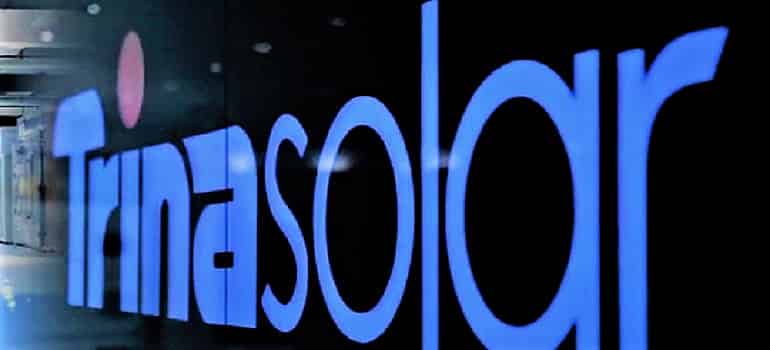
The new Vertex modules from Trina Solar is spearheading the solar energy industry’s adoption of higher efficiency, higher power modules.
The firm has signed its first 100MW plus contract in India for Vertex modules with SunSource Energy- a provider of solar- based energy and storage solutions in India, South East Asia and emerging markets.
SunSource Energy, headquartered in Noida in the Indian state of Uttar Pradesh, has placed an order for 105MW of Vertex bifacial modules, and will be using the modules for projects across multiple states in India. Trina Solar will start the module shipment in the fourth quarter of 2020.
This is the first 100MW plus contract in India for Trina Solar’s new Vertex modules, says the President of Trina Solar Asia Pacific, Helena Li.
“The fact that such a large order for Vertex modules has come from India says a lot about the demand for renewable energy in this market.”
“In the India market, there has been a lot of interest and demand for the Vertex bifacial modules. Going forward, we foresee continuous strong demand for high power solar modules and the reason for this is the Indian market is highly competitive, and conscious of the product performance, BOS and LCOE,” says Li.
“Everyone wants to achieve a better levelized cost of energy (LCOE). The Vertex modules are higher power modules, which means you don’t need to have as many modules to achieve the desired total power output for the project.”
“This in turn reduces balance of system (BOS) cost. Fewer modules, equates to: fewer mounting systems, less cabling, fewer junction boxes, fewer man hours required for installation and less land required for the project.”
Vertex is a new product, but it is based on proven technology, which is monocrystalline PERC cell, multi busbars, three-cut cell and dual-glass platform technology, adds Li.
Adarsh Das, CEO and Co-Founder, SunSource Energy, says: “At SunSource, we have always focused on upholding high quality and performance standards. Our longstanding partnership with Trina Solar has helped us to continually offer highly reliable power solutions built around solar energy. By combining Trina’s solar technology leadership with our applications engineering, we hope to make a significant contribution towards augmenting renewables capacity in India and elsewhere.”
Kushagra Nandan, President and Co-Founder, SunSource Energy, adds: “We congratulate Trina Solar for this order, and are pleased to be working with them. Using bifacial technology is another example of SunSource’s continued adoption of new energy technologies for its clients and investors. We were one of the first in India to deliver solar + storage and floating solar projects. Bifacial technology adds glass-on- glass durability to the highly proven mono-PERC with Trina’s scale benefits, and allows us to utilize reflected radiation. We believe this has the potential to be a game changer, and we intend to use these modules for our projects across the country.”
Trina Solar’s new Vertex series of modules have a conversion efficiency rate of up to 21% and can deliver more than 500W of power from the front surface, significantly more power than previous modules. Vertex series modules come in two versions, mono-facial back sheet modules and bifacial double-glass modules which can also generate additional power from the backside of the module.
The benefit of having higher power modules is it significantly reduces balance of system (BOS) cost. Trina Solar used the 500W-plus Vertex bifacial double-glass modules for a large-scale ground-mounted solar farm in northeast China. The results were a BOS reduction of 6-8% and LCOE decrease of 3-4% as compared to conventional 410W bifacial double-glass modules.
Vertex panels deliver more power because each panel incorporates 210mm diameter silicon cells. The larger cell size enables higher area of active light capture, resulting in higher current output. The 150 cells in each panel consist of high efficiency monocrystalline PERC cells and includes a combination of leading solar technologies optimized to boost the panel’s efficiency up to 21%, a higher power output.
These leading solar technologies include multi-busbar technology which diminishes internal resistance losses within the PV module to a minimum, resulting in better low-light performance. In addition, a highly engineered PV technology is incorporated in the product design that makes it possible to reduce the gap between each cell, therefore, enabling higher overall module efficiency which facilitates balance of system (BOS) cost savings.
Trina Solar’s research and development team has also introduced an innovative design that integrates advanced three-cut cell technology using a non-destructive cutting and high-density packaging technology. This further reduces the resistance loss and significantly improves the PV module resistance to cell-cracks and hot spot performance while maximizing space utilization. By doing so, the scientists created high- power modules characterized by high efficiency and high reliability, giving customers security for its performance over a warrantied period of time.

